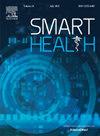Advancing real-world applications: A scoping review on emerging wearable technologies for recognizing activities of daily living
Q2 Health Professions
引用次数: 0
Abstract
Wearable technologies for Activities of Daily Living (ADL) recognition have emerged as a crucial area of research, driven by the global rise in aging populations and the increase in chronic diseases. These technologies offer significant benefits for healthcare by enabling continuous monitoring and early detection of health issues. However, the field of ADL recognition with wearables remains under-explored in key areas such as user variability and data acquisition methodologies. This review aims to provide a comprehensive overview of recent advancements in ADL recognition using wearable devices, with a particular focus on commercially available devices. We systematically analyzed 157 studies from six databases following Preferred Reporting Items for Systematic Reviews and Meta-Analyses guidelines, narrowing our focus to 77 articles that utilized proprietary datasets. These studies revealed three main categories of wearables: prototype devices (40 %), commercial research-grade devices (32 %), and consumer-grade devices (28 %) adapted for ADL recognition. Additionally, various detection algorithms were identified, with 31 % of studies utilizing basic machine learning techniques, 40 % employing advanced deep learning methods, and the remainder exploring ensemble learning and transfer learning approaches. Our findings underscore the growing adoption of accessible, commercial devices for both research and clinical applications. Furthermore, we identified two key areas for future research: the development of user-centered data preparation techniques to account for variability in ADL performance, and the enhancement of wearable technologies to better align with the practical needs of healthcare systems. These advancements are expected to enhance the usability and efficiency of wearables in improving patient care and healthcare management.
推进现实世界的应用:对识别日常生活活动的新兴可穿戴技术的范围审查
在全球人口老龄化和慢性病增加的推动下,用于日常生活活动(ADL)识别的可穿戴技术已成为一个关键的研究领域。这些技术通过实现持续监测和早期发现健康问题,为医疗保健提供了显著的好处。然而,可穿戴设备的ADL识别领域在用户可变性和数据采集方法等关键领域仍未得到充分探索。本综述旨在全面概述使用可穿戴设备的ADL识别的最新进展,特别关注商用设备。我们系统地分析了来自6个数据库的157项研究,遵循系统评价和荟萃分析指南的首选报告项目,将我们的重点缩小到77篇使用专有数据集的文章。这些研究揭示了可穿戴设备的三个主要类别:原型设备(40%)、商业研究级设备(32%)和适应ADL识别的消费级设备(28%)。此外,还确定了各种检测算法,其中31%的研究使用基本机器学习技术,40%使用先进的深度学习方法,其余的研究探索集成学习和迁移学习方法。我们的发现强调了在研究和临床应用中越来越多地采用可获得的商业设备。此外,我们确定了未来研究的两个关键领域:以用户为中心的数据准备技术的发展,以解释ADL性能的可变性,以及可穿戴技术的增强,以更好地满足医疗保健系统的实际需求。这些进步有望提高可穿戴设备在改善患者护理和医疗保健管理方面的可用性和效率。
本文章由计算机程序翻译,如有差异,请以英文原文为准。
求助全文
约1分钟内获得全文
求助全文

 求助内容:
求助内容: 应助结果提醒方式:
应助结果提醒方式:


